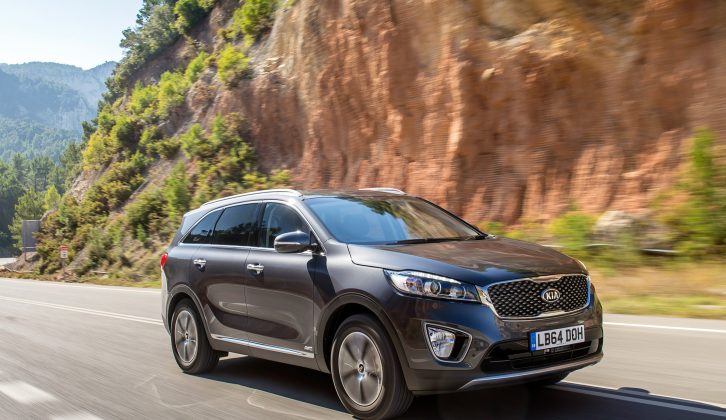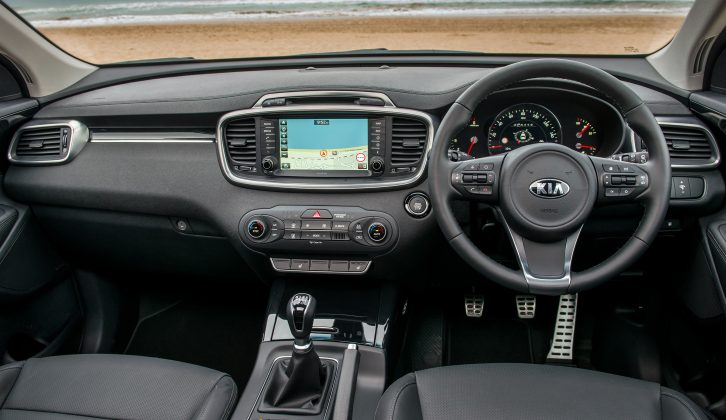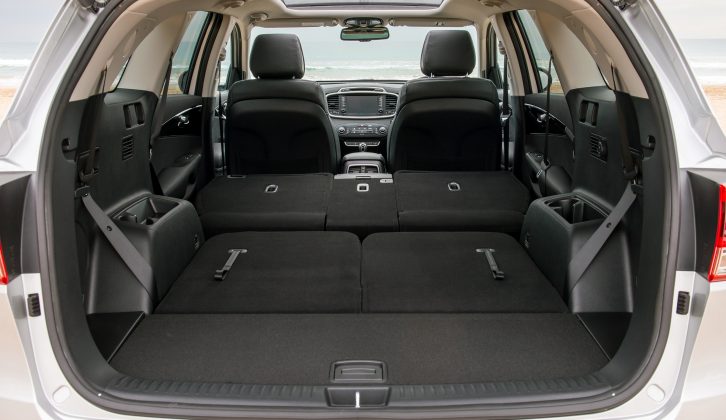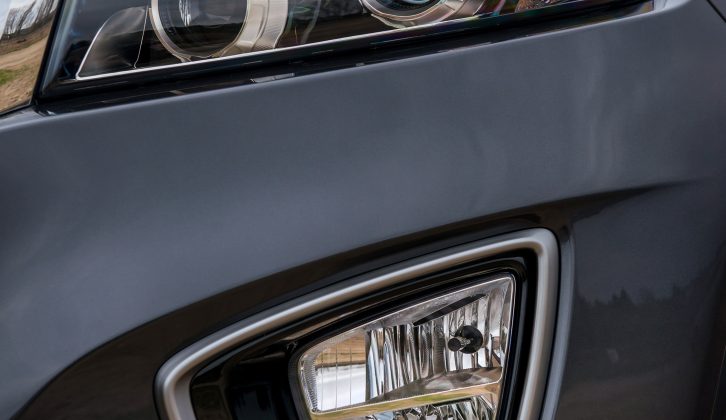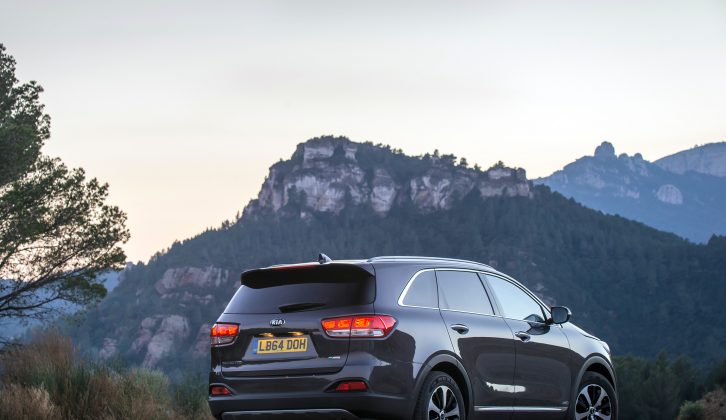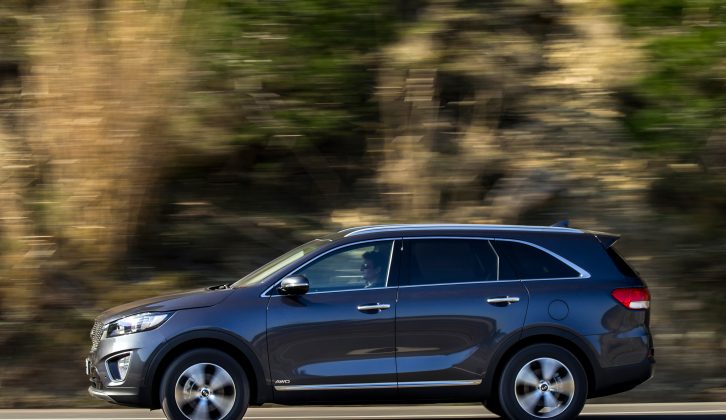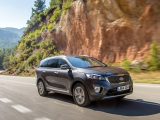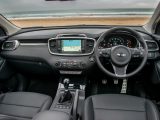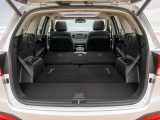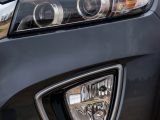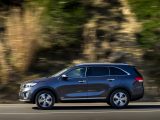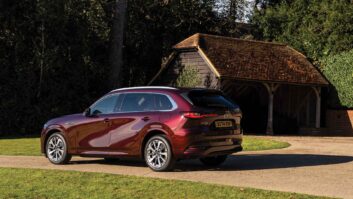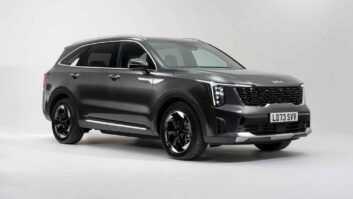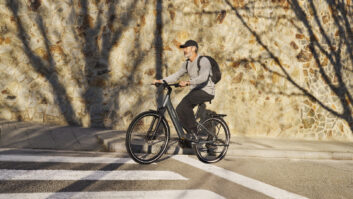Kia‘s third-generation Sorento will be priced from £28,795 when it goes on sale at the beginning of next month. We’ve been among the first to drive UK-spec versions of the Korean brand’s new 4×4.
The starting price represents an increase of £1800 over the current car. In fact, as the price of the old model has been reduced until the end of the month to clear stock, right now you could buy the previous generation for £4000 less than the new version without any haggling.
However, Kia argues improvements to the new car justify the price hike. The new Sorento is roomier, more economical, more powerful and better equipped than the old car. With four-wheel drive across the board and a kerbweight of close to two tonnes, it should make an appealing tow car for caravanners.
As well as setting prices, Kia has also confirmed equipment levels for UK models. The range starts with the KX-1 manual. It comes with 17-inch alloy wheels, air-conditioning, cruise control, all-round electric windows, a DAB digital radio, heated and electrically adjustable door mirrors, reversing sensors, roof rails and a full-size spare wheel.
Standard safety equipment includes Electronic Stability Control, Vehicle Stability Management, Trailer Stability Assist to resist snaking while towing, six airbags and an ‘active’ bonnet to reduce injuries to pedestrians in the event of a collision.
Stepping up from KX-1 to KX-2 spec pushes the price from £28,795 to £31,995. Upgrades include dual-zone climate control in place of air-conditioning, heated front and outer rear seats, a reversing camera, automatic lights and wipers, black leather/faux leather upholstery, a seven-inch touchscreen sat-nav and self-levelling suspension. Buyers can order cars without self-levelling for £500 less, but we’d say this feature is worth having as past experience suggests it should make a significant difference to the car’s stability when towing.
For our money, KX-2 looks like the best value of the four trim levels, but stepping up to KX-3 spec means an even longer list of toys. There’s a panoramic sunroof, xenon headlights and adaptive front lighting. The sat-nav’s touchscreen grows by an inch, the driver’s seat offers eight-way electric adjustment, and the tailgate is powered. Instead of conventional dials, the KX-3’s instruments are shown on a seven-inch TFT colour screen, and the stereo is upgraded. A lane departure warning system and speed limit sign recognition swell the list of safety kit. The price of the KX-3 model is £35,845 for the manual.
Go for the range-topping KX-4 to add ventilated front seats with 10-way adjustment for the driver and eight-way adjustment for the front passenger. High-tech driver safety aids include Adaptive Smart Cruise Control (which adjusts the car’s speed to maintain a safe gap to the car in front), a 360-degree Around View Monitor (which uses cameras to show the car’s surroundings), the Smart Park Assist System, Blind Spot Detection and Rear Cross Traffic Alert. However, all those gadgets and tech push the price up to £40,995.
The KX-4 is only available with a six-speed automatic gearbox, while the KX-1 is only available as a six-speed manual. Choose one of the two mid-spec models and you have a choice between the two transmissions, with the automatic costing £1750 more.
Our former editor, Nigel Donnelly, gave his impressions of the new Kia Sorento after driving the car out in Korea last year. We’ve now been behind the wheel of right-hand drive UK spec cars.
To drive, the new Sorento is a big improvement over its predecessor. The suspension is smooth and comfortable over all but the roughest surfaces, without being sloppy. Corner hard in the Sorento and you’re left in no doubt that this is a big, heavy car – it’s not exactly light on its feet – but it handles tidily and grips well. That all bodes well for stability when towing.
At speed, the car is mostly quiet. Road noise can be a little intrusive on coarse surfaces, but there’s not much in the way of wind noise and the engine stays in the background unless revved hard. There’s rarely any need to do so since the engine pulls hard from low down the rev range.
All UK cars come with an updated version of the existing 2.2-litre diesel. It now has slightly more power (197bhp) and torque (325lb ft). These are healthy numbers and should make light work of towing even a heavy caravan. The smooth-shifting auto effortlessly makes the most of the diesel’s considerable muscle, but if you don’t mind stepping on a clutch pedal and stirring a gearlever you’ll be rewarded with better economy.
Manual cars on 17-inch wheels returning 49.5mpg on the combined cycle and emitting 149g/km of carbon dioxide, compared with the outgoing equivalent’s 47.9mpg and 155g/km. Larger alloys or an auto gearbox worsen these figures, with the auto on 18- or 19-inch alloys returning 42.2mpg on the combined cycle and emitting 177g/km of CO2.
Kerbweights are similar to those of the previous generation. Kia quotes a minimum weight of 1932kg for the manual, and 1953kg for the auto. That gives an 85% match figure, as usually recommended for safe and stable towing, of at least 1642kg. The legal towing limit is 2500kg for manual cars and 2000kg for the auto. The maximum download on the towball is 100kg.
Inside, the cabin is much improved compared with the old car’s. Everything looks and feels of a higher quality than before, with soft-touch plastics and an attractive design. The touchscreen is easy to use, and we’re pleased Kia has stuck with conventional dials and buttons for the air-con controls, so there’s no wading through on-screen menus to change the temperature or adjust the fan speed.
There’s more space than before as well as better fit and finish. The wheelbase (the distance between the front and rear axles) has been increased by 80mm (around three inches). This has allowed Kia’s engineers to find more legroom in all three rows. Those in the middle row have plenty of room, and the flat floor leaves ample space for everyone’s feet. There’s enough room for adults in seats six and seven, especially if those in the middle don’t mind sliding their seats forward a bit. However, the thick rear pillars leave those in the third row rather hemmed in.
With all seven seats upright luggage space is a meagre 142 litres. Fold the rear seats into the floor and that increases to a very generous 605 litres. That’s as much as you’ll find in many big estate cars and great for your caravan holidays. Fold the middle row (there are levers just inside the car on either side of the tailgate) and the capacity is 1662 litres. If you need to load up to the roof, there’s room under the boot floor to store the luggage cover.
There’s a lot to like about the new Kia Sorento. It’s better to drive, better made and more practical than before – and we look forward to hitching it to a van to discover what tow car ability it has. But with all but one version now costing over £30,000, Kia execs will have their fingers crossed they haven’t taken the Sorento too far upmarket.
It's better to drive, better made and more practical than before
